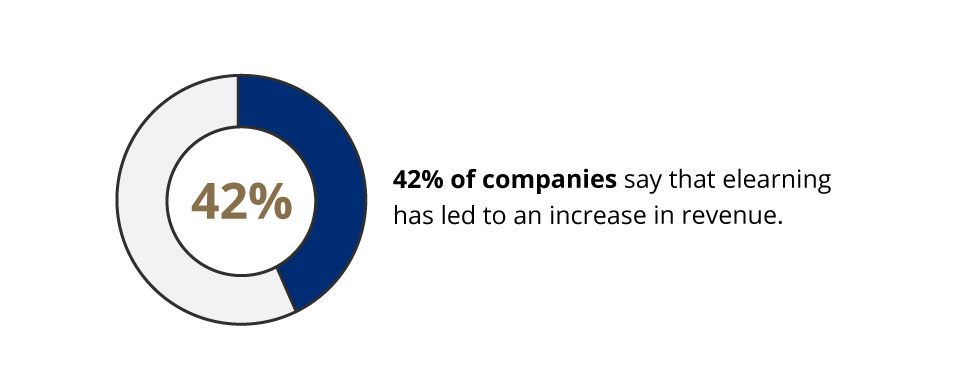How An Instructional Design Skill Set Could Benefit Your Career
You may have heard of the term “Instructional Designer” before. But what exactly does it mean to be an instructional designer and what benefits does an instructional design skill set have for your career opportunities?
Let’s take it back to the research to provide some context first.
The rise of eLearning
Currently, more than 41% of Fortune 500 companies use some form of technology to train their employees, with 42% of companies saying that e-learning has led to an increase in revenue. Corporations continue to adopt instructional technology, currently at a rate of 13% per year.

And the online education sector is growing with at an equally rapid pace. According to the Online Learning Consortium, an estimated 5.8 million students are enrolled in online courses. These differ between for-credit courses, where students take online classes offered by higher institutions in order to gain more credit for the tertiary education they are enrolled in, and then secondly there are certificate courses, aimed at working professionals who want to build up their portfolio of skills or move into a new industry of work.
What does this mean for you?
In both the education and corporate sector, there is a growing need for skilled instructional designers who are able to create, write and build online programmes using effective instructional technology, such as Learning Management Systems (LMS).
According to PayScale, an Instructional Designer in South Africa can earn up to R462,450 per year – and with the e-learning market being worth an enormous $167 billion in 2016 alone, and growing at a steady pace, this career path will become increasingly lucrative.
The best part is that you don’t need an instructional design degree in order to make it in the industry. You could acquire the appropriate skills needed to land an instructional design job simply by enrolling in an online short course.
An instructional design career in the education sector
In schools and tertiary institutions, the traditional teacher can no longer contain their knowledge within the confines of Powerpoint presentations. Instructional designers are able to fill this gap by bringing an expertise of superior quality media, technical software competencies and content writing skills, to be able to develop effective and engaging curriculums for students.
So if you’re currently in the education industry and are looking for a new way to contribute, instructional design may be the career path of choice.
An instructional design career in the corporate sector
You may want to move into a corporate industry instead. The demand for an instructional design skill set is high in this sector too, with the global corporate eLearning market projected to reach an approximate revenue of USD $31 billion by the end of 2020.
So whether you currently work in corporate training, work as a copywriter or content creator, or are starting out in the corporate industry, you could increase your earning potential and change your career path by developing this very sought-after set of skills.
[bctt tweet=”Global corporate eLearning market projected to reach USD $31 billion in revenue by 2020.” username=”getsmarter”]
What is an instructional design skill set comprised of?
The main goal of instructional designers is to work technology and relevant content into a cohesive and easily accessible learning experience. So what skills do you need in order to develop educational material into frameworks suitable for online learning?

- Have interdisciplinary knowledge as well as cross-cultural competency
- A commitment and passion for learning and technology
- The ability to conduct thorough research and collate a cohesive body of information from various sources
- Be good at effective communication, both visually and verbally
- Be able to create content with information that can be used and applied in the real world – being able to relate to the audience’s professional field
- Have a sound knowledge so multimedia so you can choose appropriate multimedia to use and write effective copy, audio and video scripts
- Be able to design a course based on expected outcomes, available technology, budget, and time
- Have the ability to develop the correct instructional strategy and proper course structure – including presentations, case studies, learner participation and evaluation.
- Be a resourceful and flexible problem-solver
- Create assessment methods that foster the students’ development
Ready to learn an instructional design skill set that could land you a job?
Register for the Wits Instructional Design online short course today